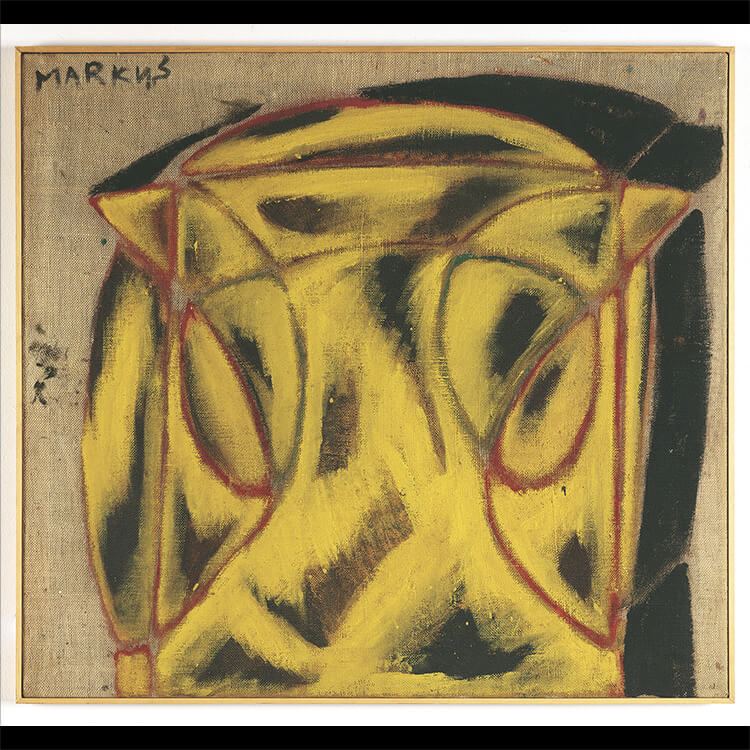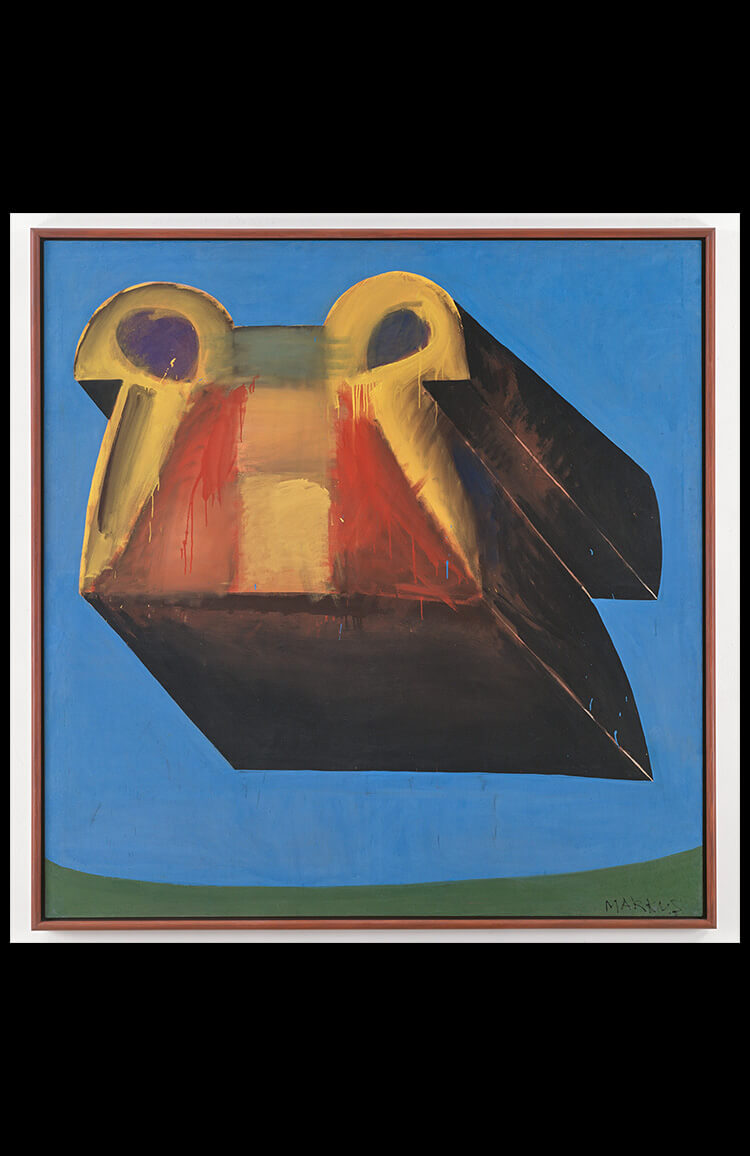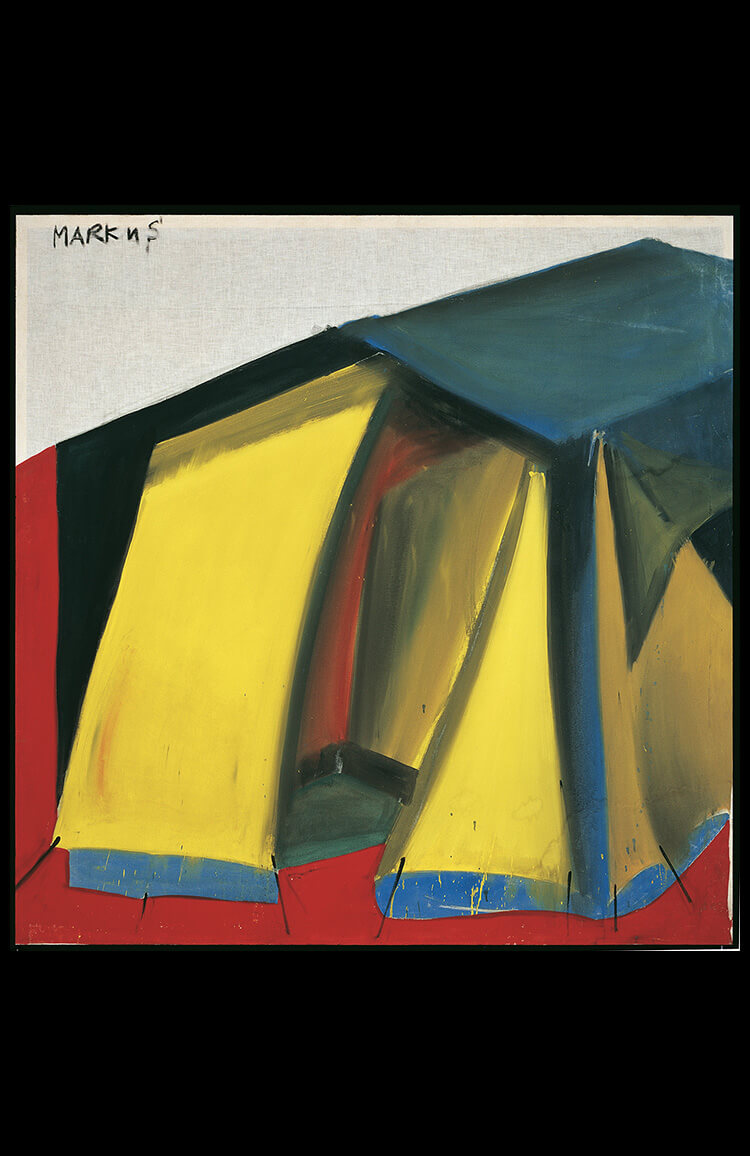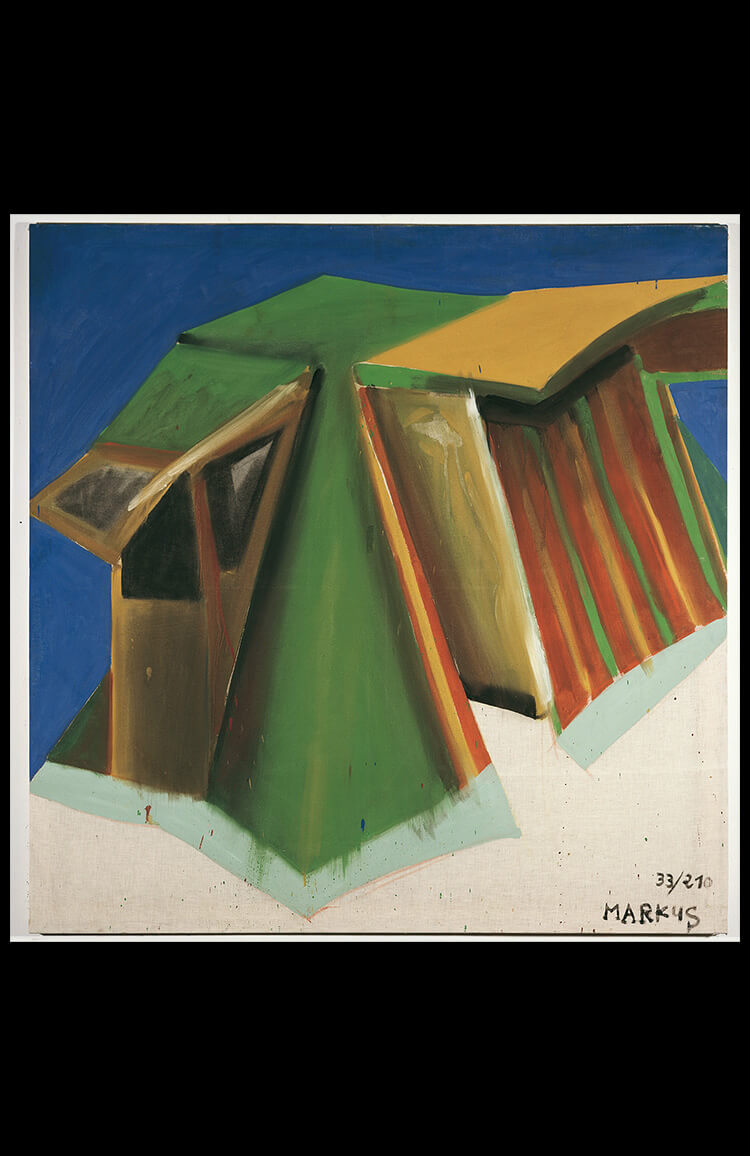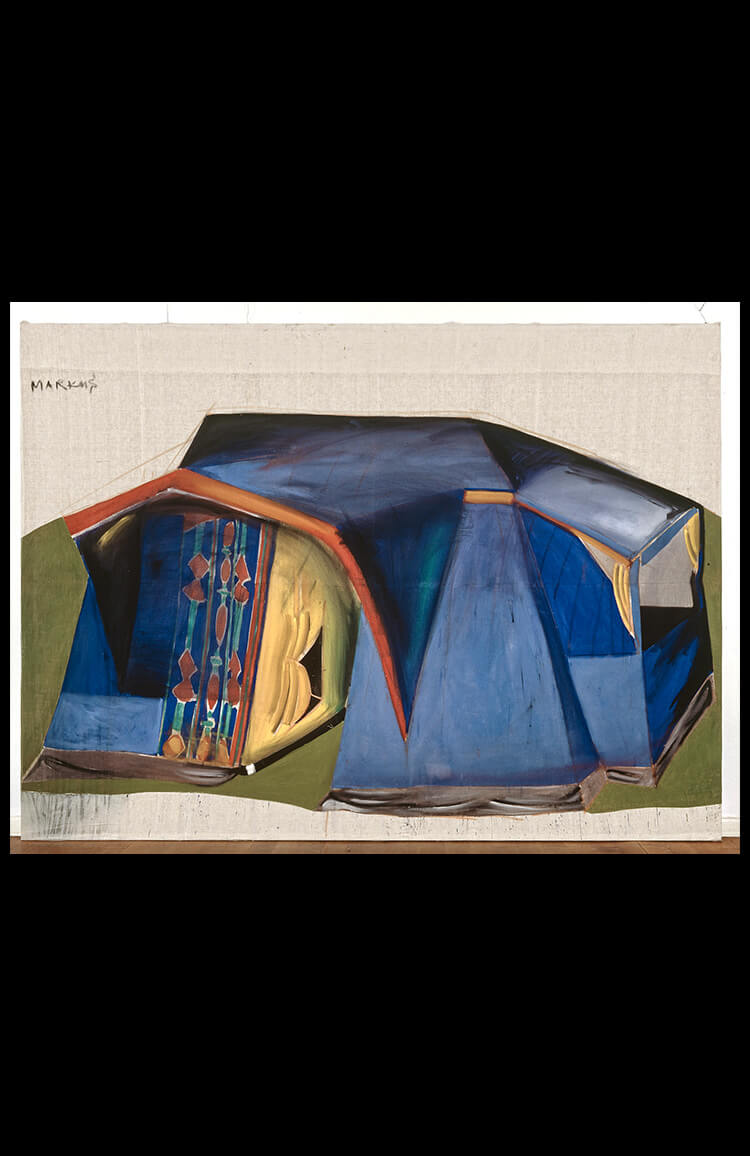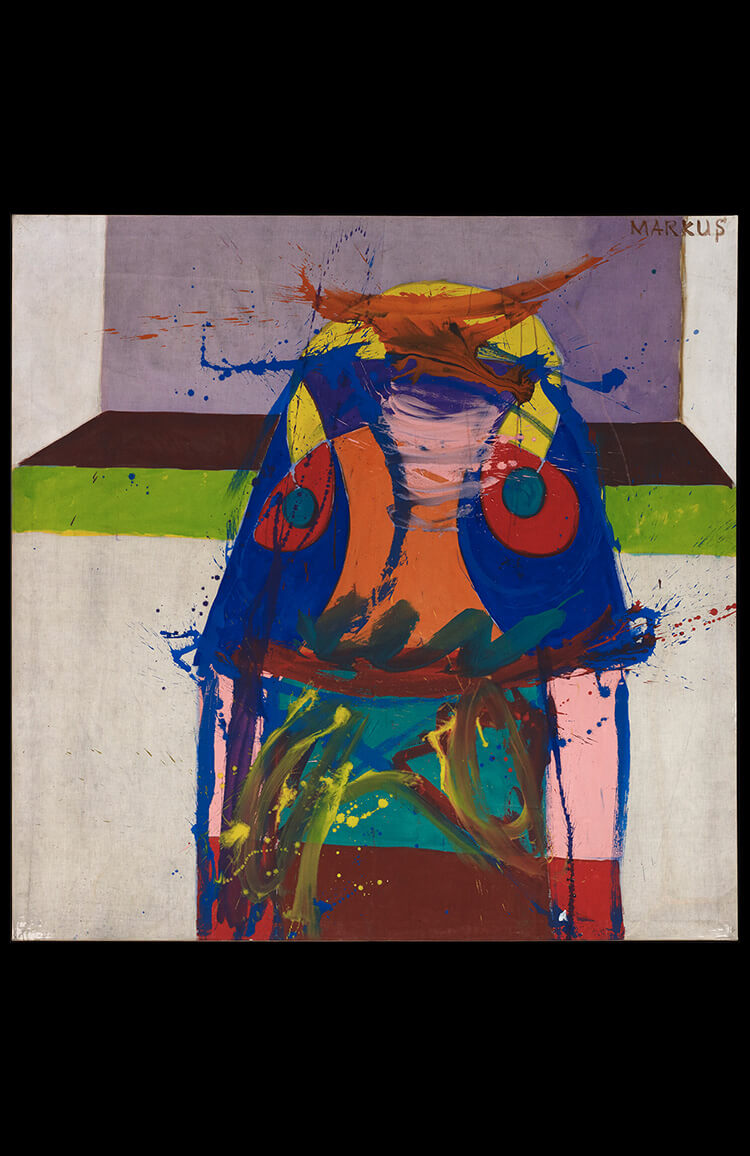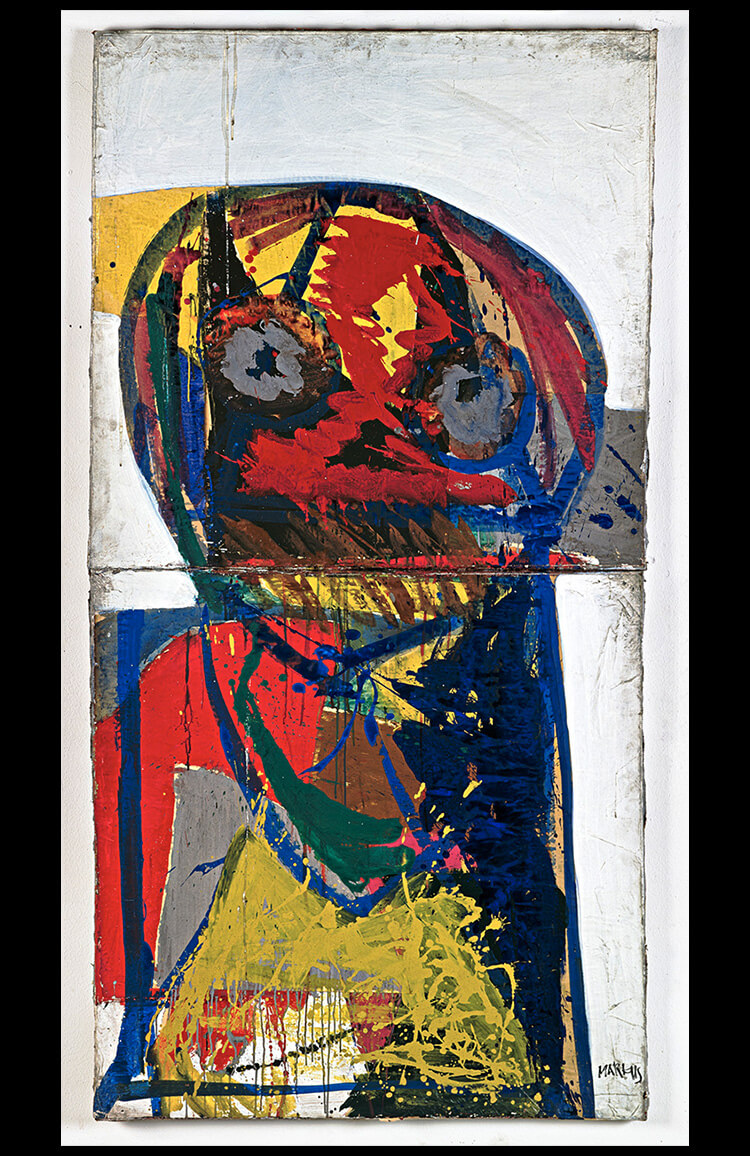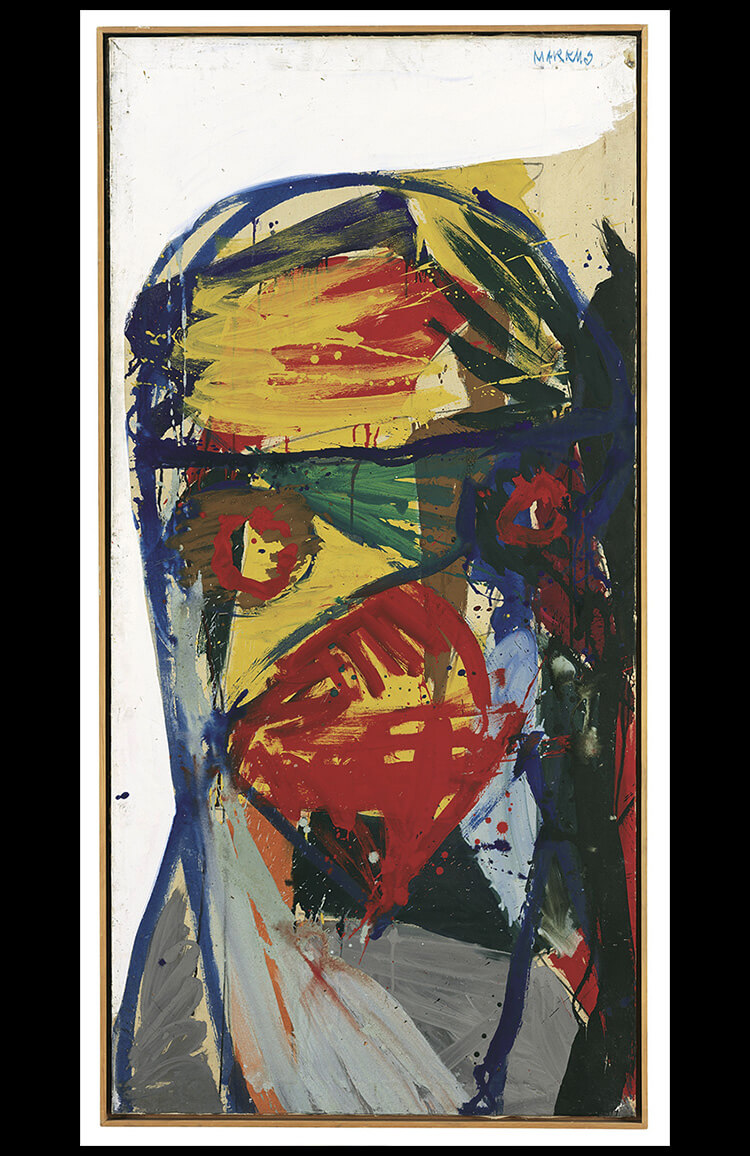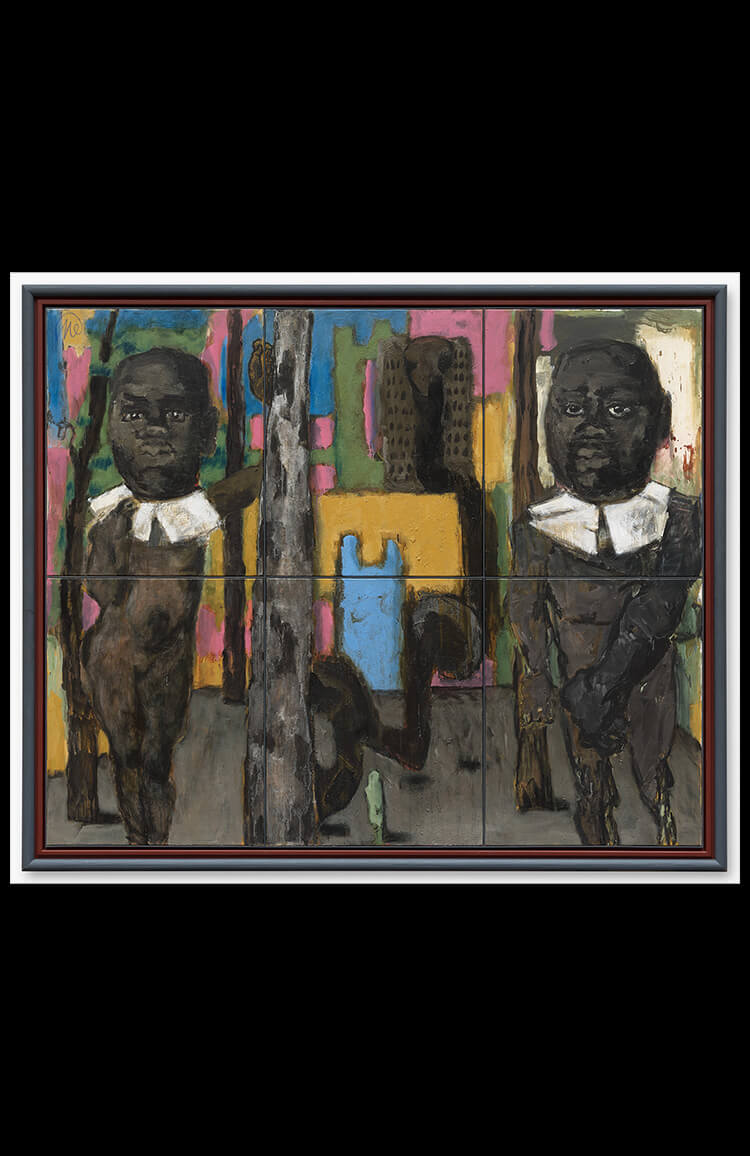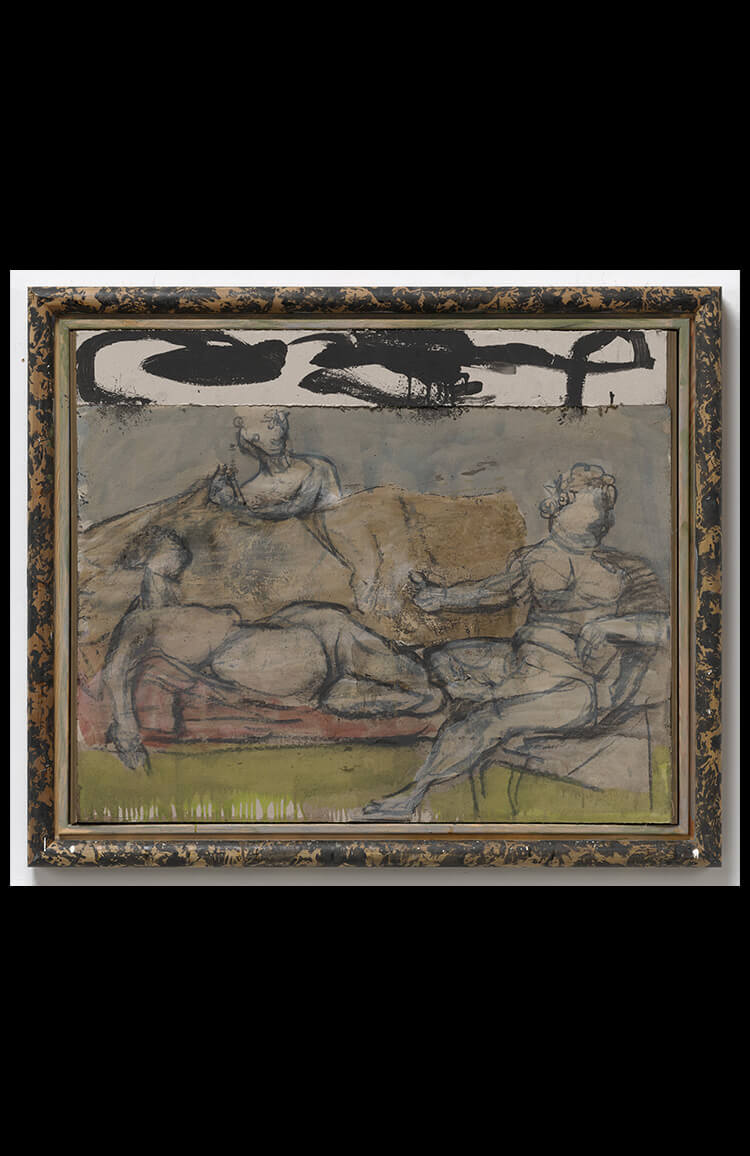“Paintings are hard to talk about and even harder to be recognised for what they are”
The German artist Markus Lüpertz (b. 1941) belongs to the generation of post-war European painters who developed an approach that embraced both representational and abstract imagery in an attempt to create new aesthetic forms in painting. For Lüpertz this led to his series of “dithyrambic” paintings, depicting quasi-representational forms that appeared sculpted out of paint and interspersed with abstract blocks of colour. “Dithryamb” refers to the ecstatic dedications that would be made in honour of the Ancient Greek god of fertility and pleasure, Dionysus, a reference to the spirit of improvisation and spontaneity Lüpertz would carry in the studio in order to create his large-scale, energetic paintings. In the quick-fire interview that follows, Lüpertz gives a brief insight into his early experiences as an artist, his use of motifs and his views on painting.
INDIA NIELSEN__It’s been about two years since the COVID-19 pandemic hit Europe. What has this experience been like for you?
MARKUS LÜPERTZ__It’s a disease and one has to face it. The rest is everyday routine.
IN__You attended the art academy in Krefeld, Germany when you were just 15 years old, how did you end up there so young?
ML__It was my decision to be a painter. So I did everything to make it happen.
IN__You also attended the Kunstakademie Düsseldorf for one semester before being thrown out. What happened…?
ML__General unruliness…
IN__Did you ever have the concern that, having been surrounded by artists for the majority of your life, that you might be making work in a “bubble”? Did you do anything to get yourself out of it?
ML__I was lucky to have some strong competition in the field of painting from the beginning up until today. Painting is a discipline and competition is a necessary condition, without which, discipline cannot bloom.
IN__In a conversation with the British painter Peter Doig you describe seeing the first exhibition of the American abstract expressionists (namely those of Willem de Kooning and Franz Kline at the Berlin Academy in 1958 and 1960 respectively) as a revelation of a “new way” of painting. I was surprised to discover the influence of this so-called New York school of painters on your work as your paintings are so distinctively German. What impact did these particular shows have on you and how did your work change as a result?
ML__My horizons grew wider and I saw new limitations rise on it - but the impetus of my work did not change.
IN__Not long after this, in the early 1960s, you began making your Donald Duck series, a series of large scale paintings featuring abstract, barely held-together figures in primary colours, the only resemblance to the Warner Bros character being the suggestion of eyes or a mouth. In terms of content, this series stands out in relation to your other works and seems to be the only instance, to my mind, of you using a cartoon character as a motif in your paintings. Was your choice of Donald Duck as a motif a conscious reference to American pop culture as a result of this influence?
ML__Yes, Donald Duck was a consciously distorted reference to American culture which most of my colleagues followed and I later disintegrated.
IN__This also seems to be the first instance of you working serially. I’m wondering if you were influenced in this regard by another type of painting coming out of New York at that time: Pop art. For example, Andy Warhol’s Campbell’s Soup Cans (32 canvases on which a near-identical Campbell’s can of soup was screen-printed, each one corresponding to the 32 flavours they manufactured at the time) was first exhibited in 1962. You were creating your Donald Duck series at the same time; the title suggests an approach to seriality that values uniformity and mass-availability in a similar way to Warhol.
The paintings however tell a different story; not only do they bear little resemblance to the character of their title, but they don’t really even resemble each other - the loose similarities tying each together being colour scheme and the vague suggestion of a figure. Would you say you were both inspired by the abstract expressionists and reacting against the pop artists, particularly Warhol, emerging on the New York art scene at the time?
ML__Yes as I understand it, those early Warhol works were still part of the discipline of painting at that time. The later dominance of seriality distanced that work from the rules of the discipline and so I lost interest in the Warhol canvases. After that they became photographs for me, not paintings.

